Gardeners and homesteaders are always in search of a plant or fruit which is unique as well as has a lot of benefits in terms of ornamental value and health value. Well, there is one fruit. That fruit is kiwi fruit. Many people like it and enjoy it.
That’s why people are in search of this plant. Kiwi fruit is very beneficial for health. People want to know how this plant can be planted. That’s why we are going to discuss how to grow kiwi from fruit, as many people think of growing it when they have it.
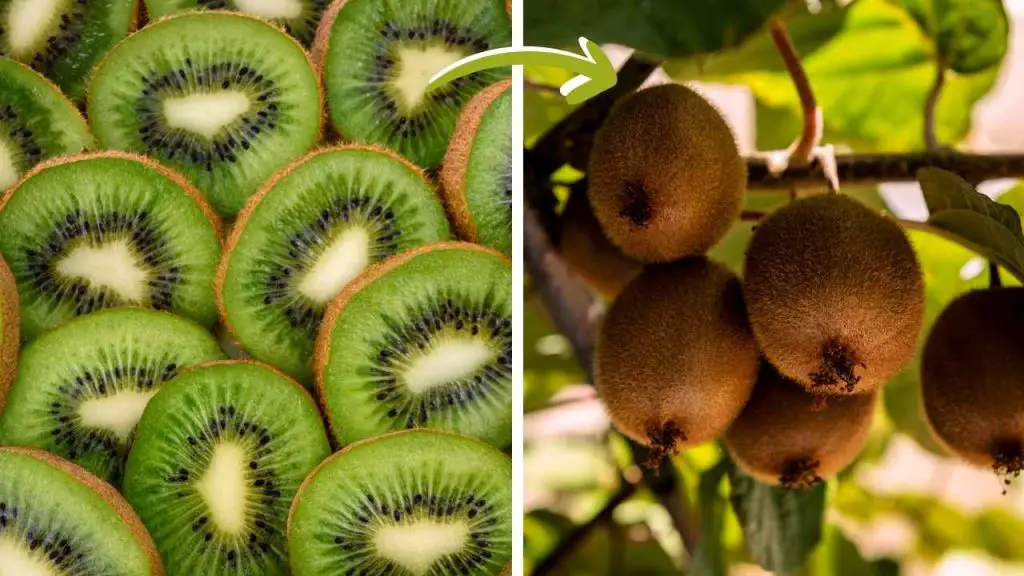
Kiwi Fruit
Kiwi fruit, also known as kiwifruit or Chinese gooseberry, is a small fruit with a brown, fuzzy exterior and green or yellow flesh with small black seeds. It is native to China but is now grown in many parts of the world, including New Zealand, which is the largest exporter of kiwi fruit.
Kiwi fruit has numerous health benefits, including supporting immune function, improving digestion, and reducing inflammation. It is considered a great source of potassium, vitamin K, fiber, antioxidants, and other vitamins like vitamin C, etc.
To eat kiwi fruit, you need to cut it into two pieces. Then get the fruit out of the flesh with a spoon, or slice it into rounds and eat it with the skin on. Kiwi fruit can be eaten on its own or used in various recipes, such as fruit salads, smoothies, and desserts.
Growing kiwi fruit can have several benefits, both for personal consumption and commercial purposes. You can enjoy it on both scales. You will not only enjoy growing it but also you will benefit from it eating it.
Nutritious and delicious fruits
Kiwi fruit is a nutrient-dense fruit that is high in vitamins, minerals, fiber, and antioxidants. Growing your own kiwi fruit can provide you with a fresh and delicious source of healthy fruit. It will definitely add to your health. Also, it is quite delicious, you will surely enjoy it.
High yielding crop
Kiwi fruit vines are known for their high-yield production, with each vine capable of producing hundreds of pounds of fruit per season. This can make growing kiwi fruit a profitable venture for commercial growers.
Drought resistant plant
Kiwi fruit vines are relatively drought-resistant and can tolerate dry conditions, making them a good choice for growers in areas with limited water resources. But don’t make it wait for long for the water, as it may die.
Environmentally friendly
Kiwi fruit is a relatively low-maintenance crop that requires minimal pesticide use, making it an environmentally friendly choice for growers.
Also, it has great ornamental value. Kiwi fruit vines have a lush, tropical appearance that can add ornamental value to your garden or landscape.
Versatile usage
Kiwi fruit can be used in a variety of recipes, from smoothies and desserts to savory dishes like salads and salsa. Growing your own kiwi fruit can provide you with versatile ingredients for cooking and baking.
Increased biodiversity
Growing kiwi fruit can help increase biodiversity in your garden or farm, as the vines provide habitat for birds, insects, and other wildlife. It will make pollination good in the garden.
Keep Reading
- How To Grow Kiwi Fruit In A Greenhouse?
- How To Grow Kiwi Berries From Seeds?
- Best Fruits To Grow In Raised Beds
How To Grow Kiwi From Fruit?
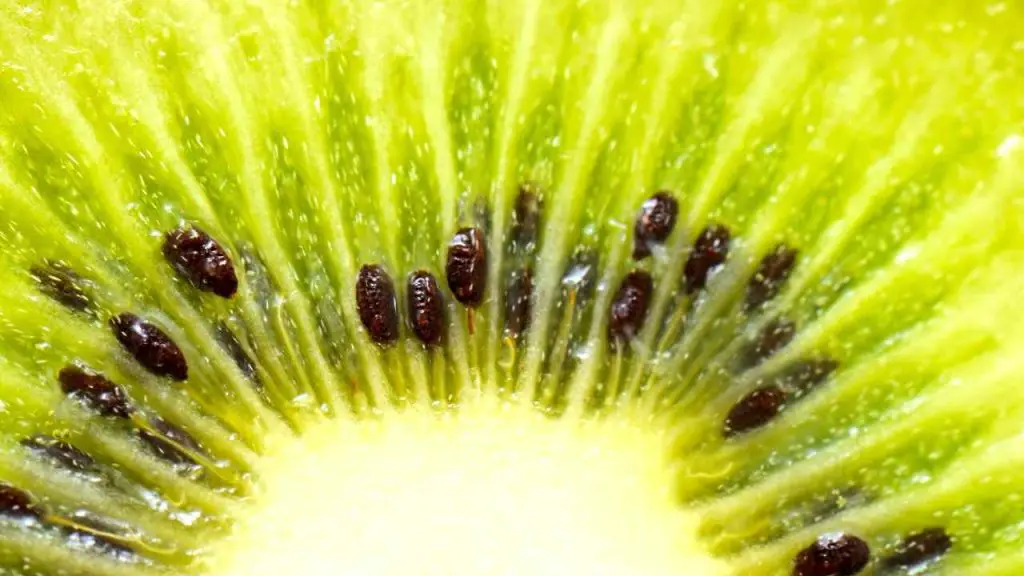
Growing kiwi from the fruit can be a fun and rewarding process, but it does require patience and attention to detail. You just need to have patience and follow the following steps. Then you are good to go for enjoying kiwi fruit.
Here are the steps that you can follow to plant the kiwi fruit:
Selecting the Right Fruit
When selecting a kiwi fruit to grow from, look for a ripe, healthy fruit. It should be plump, firm, and free from any mold or soft spots. The kiwi fruit should also have viable seeds, which can be seen as small black or white specks throughout the flesh of the fruit.
There are three types of kiwi fruits available. one is the common kiwi. It is easily available in the stores. The other type is the golden kiwi. It is more delicate than the common kiwi.
The third type of kiwi is the kiwi berry. These are smaller than the common and golden kiwis. These are tolerant to colder climates.
Extracting the Seeds
To extract the seeds, cut the kiwi fruit in half and use a spoon to scoop out the flesh. Place the seeds in a strainer and rinse them under running water to remove any remaining flesh. Make sure these seeds are fully clean.
Drying the Seeds
Once you have extracted the seeds, place them on a paper towel to dry. This will help prevent mold growth and ensure that the seeds are ready for planting. Spread the seeds so that they get fully dry. Also, make sure all seeds are in good health. There are no damaged seeds.
After drying you can make the seeds sprout. Just place the seeds in the wet paper towel. It will sprout in a few days.
Preparing the Soil
Kiwi plants prefer well-draining soil with a pH between 5.0 and 7.0. Mix high-quality potting soil with sand or perlite to ensure good drainage. Fill a small pot or seed tray with the prepared soil. Make sure the required nutrients are there for the kiwi fruit plants.
Planting the Seeds
Once the seeds are dry, plant them in the prepared soil. Place one or two seeds in each pot or cell, covering them with about 1/4 inch of soil.
Water the soil gently, being careful not to disturb the seeds. Make sure the seeds are covered in the layer of soil. You can plant sprouted seeds also.
Providing Optimal Growing Conditions
Kiwi seeds need warmth and moisture to germinate and grow well. Keep the pots or seed trays in a warm, sunny location and water them regularly to keep the soil moist. Cover the pots or trays with plastic wrap or a clear plastic lid to help maintain humidity.
Transplanting the Seedlings
Once the seedlings have grown to about 3 inches tall and have several leaves, they can be transplanted into larger pots or into the ground. Make sure to transplant them when the soil is moist, and be careful not to damage the roots.
Caring for the Kiwi Plants
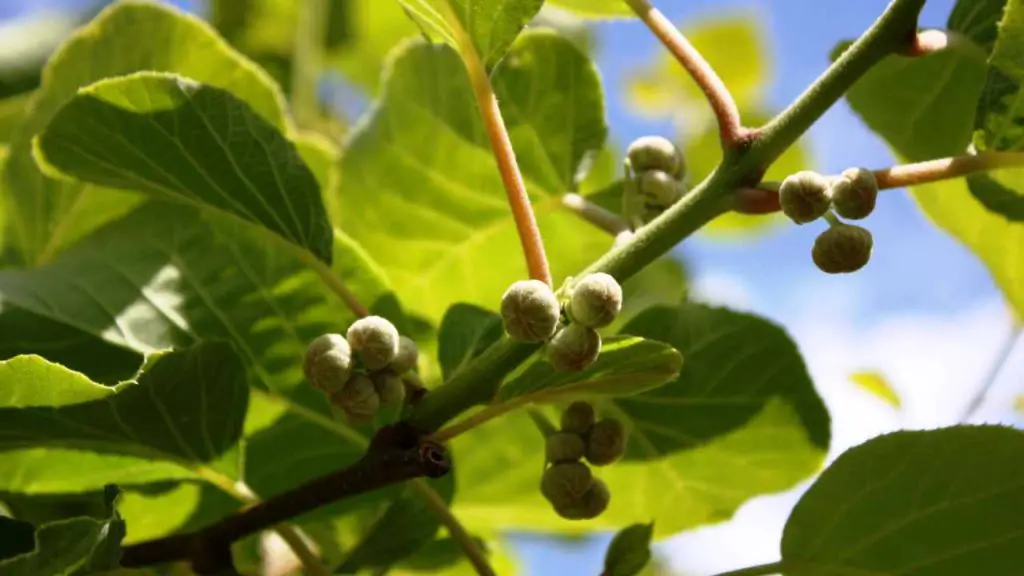
Kiwi plants need plenty of water and nutrients to grow properly. Water the plants regularly and fertilize them every 4 to 6 weeks with a balanced fertilizer. Provide support for the vines by training them to grow on a trellis or other support system.
Waiting for Fruit
It can take several years for kiwi plants to mature and produce fruit. Once the plants mature, they will produce small, fragrant flowers in the spring. These flowers will eventually develop into kiwi fruit, which can be harvested in the fall.
By following these above-mentioned steps, it is sure that you would be able to plant and grow the kiwi fruit successfully.
Keep Reading
- How To Grow Jackfruit From Seeds?
- 15 Dwarf Fruit Trees For Container Garden
- How To Grow Grapefruit Trees In Pots?
Taking Care Of The Kiwi Fruit Plant
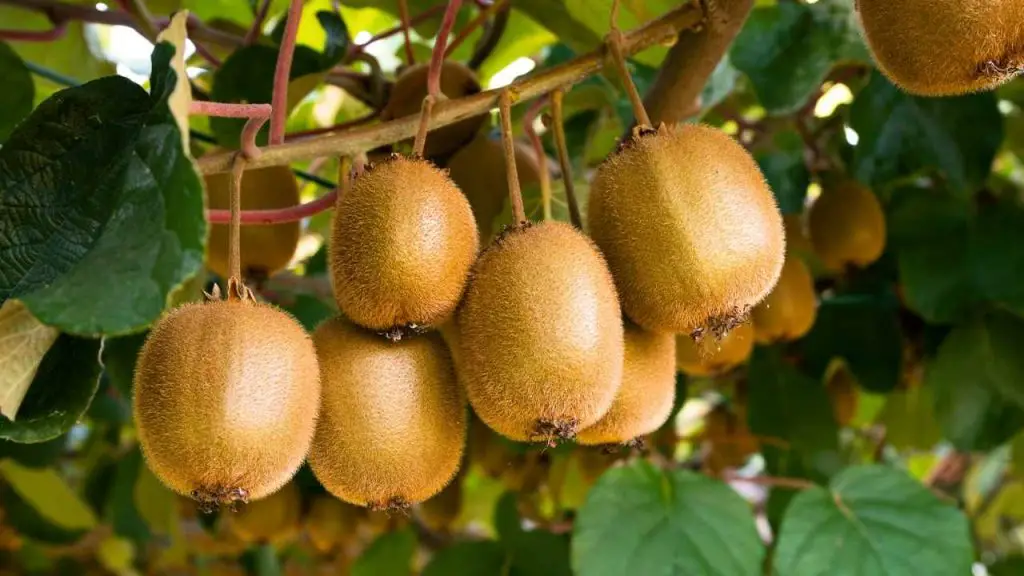
Taking care of kiwi fruit plants involves several steps, including planting, watering, fertilizing, pruning, and protecting the plant from pests and diseases. It is quite easy to take care of the kiwi plants.
Here are the steps you follow to take good care of the kiwi plant:
Planting in good soil
Kiwi fruit plants prefer 5.5 to 6.5 PH of soil. Soil should be well drained. Plant the vine in a sunny location that receives at least 6 hours of sunlight per day. Dig the hole deep enough to hold the root ball and add organic well-rotted manure to improve soil fertility.
Watering schedule
Kiwi fruit plants need regular watering, especially during hot and dry weather. Water deeply once a week or more frequently if the soil is dry. Avoid overwatering as it can lead to root rot.
Fertilizer requirement
Uniform usage of fertilizer in the growth phase will provide kiwi fruit plants benefit. Use a balanced fertilizer with equal parts nitrogen, phosphorus, and potassium. Apply the fertilizer every 4 to 6 weeks from spring to mid-summer.
Pruning kiwi fruit plant
Kiwi fruit plants require regular pruning to maintain their shape and promote fruit production. In the early spring or late winter, prune it. Cut back on older growth to encourage new shoots. Do get rid of damaged and dead branches.
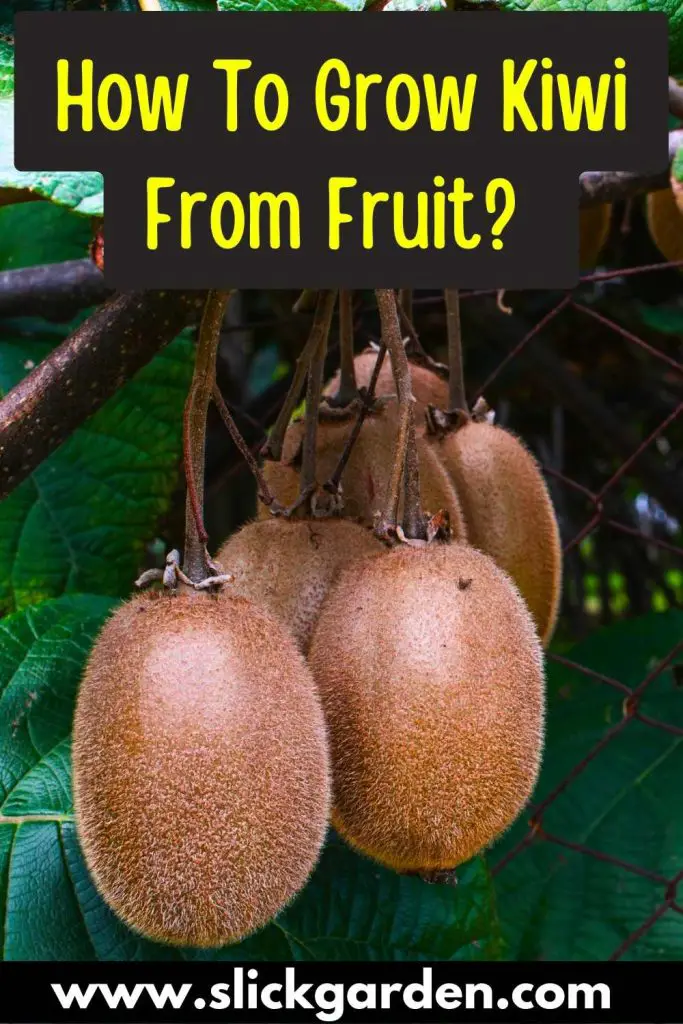
Pests and diseases
Kiwi fruit plants can be affected by pests and diseases, including spider mites, scale insects, and powdery mildew. Monitor the plant regularly for signs of infestation and treat promptly with an appropriate insecticide or fungicide.
Taking care of kiwi fruit plants requires attention to planting, watering, fertilizing, pruning, and pest and disease control. With proper care, a kiwi fruit plant can produce a bountiful harvest of delicious fruit. Make it on time so that you get the desired results.
In short, the kiwi fruit s a true blessing of nature. As it is a unique fruit with a lot of benefits. Also, it can be grown from the fruit itself, you just have to get seeds and plant them. Taking good and attentive care of it can get you a good amount of kiwi fruit.
